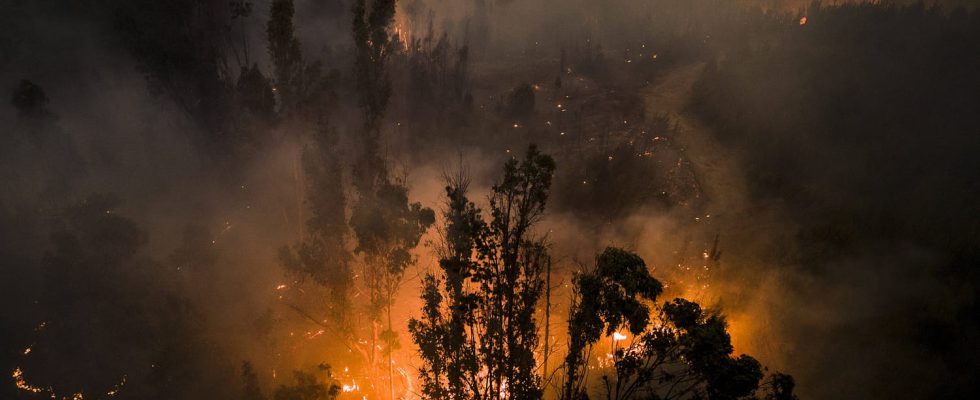Large-scale fires have been hitting Chile since Friday February 2 in the south and center of the country. An initial report shows at least 100 people dead.
Since Friday February 2, southern and central Chile have been devastated by flames. The Valparaiso region, 116 km west of Santiago, in the center of the Latin American country, is particularly affected. Yesterday, Sunday, February 4, the spokesperson for the Ministry of the Interior, Manuel Monsalve, declared during a press conference that there were “112 people killed, 32 bodies identified.”
For his part, Chilean President Gabriel Boric speaks of “the greatest tragedy” that Chile has experienced since the earthquake and tsunami of 2010 which left more than 500 dead. The president announced two days of national mourning starting this Monday, February 5. According to the National Disaster Prevention and Response Service (Senapred) around 1,400 firefighters and 1,300 soldiers and volunteers are mobilized this Monday to fight the fires which continue to rage this Monday after three consecutive days.
VIDEO: Aftermath of a wildfire in Villa Independencia, as the death toll of the forest fires in Chile rises to 112 people, and 40 active outbreaks are being battled, the Ministry of the Interior reported. pic.twitter.com/MjQ3UKQAZ8
— AFP News Agency (@AFP) February 5, 2024
The fire that has hit Chile since Friday has caused significant damage and the toll is expected to rise further in the coming days. According to a report from the Ministry of the Interior published this Saturday, around 43,000 hectares were ravaged throughout the country. An AFP team present in Quilpué to the west of Santiago reports on entire neighborhoods ravaged by flames. The governor of the Valparaiso region, Rodrigo Mundaca, and the mayor of the resort town of Viña del Mar, Macarena Ripamonti, announced that hundreds of people remain missing.
As indicated Le Figaro, the most devastating fire in the region takes place in Las Tablas and is still ongoing. According to the Minister of the Interior, Carolina Toha, the fire “covers a perimeter of 80 km”. The minister also announced that the weather situation is starting to work in favor of relief efforts because “current conditions are more conducive to caring for victims and controlling fires.” According to The worldaround forty fires were still active on Sunday evening.
For the governor of the Valparaiso region there is no doubt about the origin of the fire. As reported by Le Monde, Rodrigo Mundaca declared that the fire would be intentional, he however clarified: “We do not know if these are organized groups or arsonists, it will be up to the courts to determine.” An investigation was opened to determine the origin of the fire.
If the human and environmental toll is so heavy, this can be explained by the high population density of the Valparaiso region which is also home to numerous forests and plant areas. The homes in the region being quite precarious, they were quickly devastated. Miguel Castillo, forestry engineer at the University of Chile, explains to Le Monde that the fire came into contact with different types of fuel: “landfills, shrubs, wooden and fiber cement houses in working-class neighborhoods.” He then added that the mixed nature of this territory “makes it very difficult to fight against the flames”.
Other factors also allowed the fire to spread quickly. Chile is in the grip of a heat wave in the capital, Santiago, and in the center with temperatures close to 40°C. A phenomenon which results both from climate change and the presence of the natural El Niño phenomenon. This climatic phenomenon is responsible for an increase in temperature in the Pacific Ocean, particularly off the coast of South and Central America.
